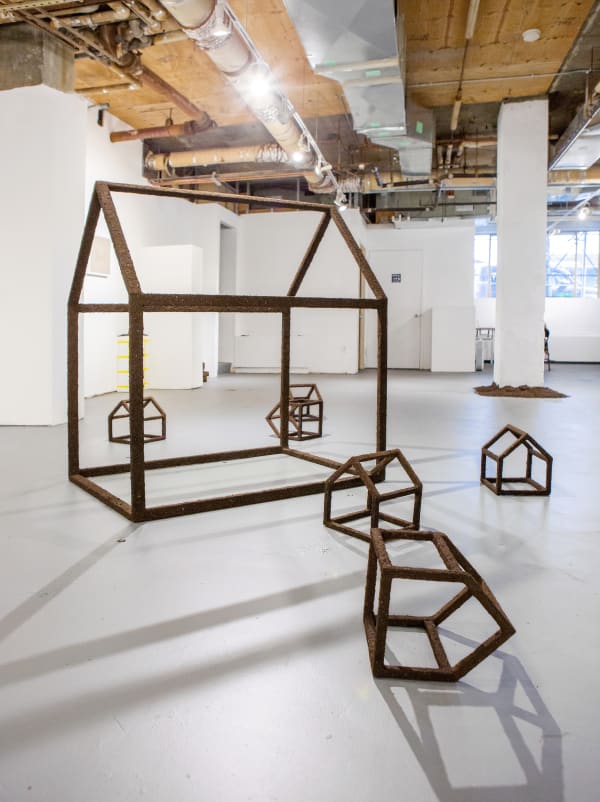Umbrales, Intersticios del tiempo y la materia: Group show
Limit of the diaphane in. Why in? Diaphane, adiaphane. If you can put your five fingers through it, it is a gate, if not a door. Shut your eyes and see.
James Joyce, UlyssesThe works gathered here invite us to pause in the uncertain, where something begins to reveal itself but has not yet been defined. In this intersection, what James Joyce called the ineluctable modality of the visible is activated: the certainty that we can only know the world through our gaze, which, though limited, is open to transformation.
The threshold is not just a metaphor; it is an experience. Each piece is an invitation to cross, move between states, and let oneself be affected by what appears between what we understand and what escapes all comprehension. A place where the gaze also becomes a form of transformation.
Elías Doria, curator
This exhibition understands the threshold as a liminal space of transition and transformation. It is not a closed border, but a place where different forms of knowledge—architecture, rural landscape, artificial intelligence, esoteric references—intersect and reconfigure.
The works gathered here invite us to pause in the uncertain, where something begins to reveal itself but has not yet been defined. In this intersection, what James Joyce called the ineluctable modality of the visible is activated: the certainty that we can only know the world through our gaze, which, though limited, is open to transformation.
As with language, which is never fully fixed nor transparent, these pieces confront us with the fragmentary, with what shifts and reshapes in each attempt at interpretation. They do not offer closed meanings but experiences built at the crossroads between the viewer and what is being viewed.
The threshold is not just a metaphor; it is an experience. Each piece is an invitation to cross, move between states, and let oneself be affected by what appears between what we understand and what escapes all comprehension. A place where the gaze also becomes a form of transformation.
In this transition, each work behaves as a heterotopia: a place within a place, containing within it other possible realities but not allowing itself to be absorbed by any. From ambiguity, the impulse toward the indeterminate arises—not as emptiness, but as a fertile space where meaning remains in constant becoming.
Elías Doria
Curator
-
 Maria Clara Figueroa, Demolición cromática, 2024
Maria Clara Figueroa, Demolición cromática, 2024 -
 Álvaro Diego Gómez Campuzano, Áereo-Olas, 1985
Álvaro Diego Gómez Campuzano, Áereo-Olas, 1985 -
 Ana María Montenegro, Cruce, 2025
Ana María Montenegro, Cruce, 2025 -
 David Medina, Rockola / Maquinita, 2025
David Medina, Rockola / Maquinita, 2025 -
 Luisa Valderrama, De la serie Paisajes removidos, 2025
Luisa Valderrama, De la serie Paisajes removidos, 2025 -
 Luisa Valderrama, De la serie Paisajes removidos, 2025
Luisa Valderrama, De la serie Paisajes removidos, 2025 -
 Karen Bendek, De la serie Las cosas que todavía me duelen, 2025
Karen Bendek, De la serie Las cosas que todavía me duelen, 2025 -
 Barbarita Cardozo, Geometría Nº 9, 2025
Barbarita Cardozo, Geometría Nº 9, 2025 -
 Pablo Gómez Uribe, Model for an endless mural, 2022
Pablo Gómez Uribe, Model for an endless mural, 2022 -
 Pablo Gómez Uribe, Proposal for a cardboard mural (A Dalmatian affair), 2022
Pablo Gómez Uribe, Proposal for a cardboard mural (A Dalmatian affair), 2022 -
 Pablo Gómez Uribe, Study for a Dalmatian Affair, 2022
Pablo Gómez Uribe, Study for a Dalmatian Affair, 2022




















